
Vietnam Journal of Chemistry
Scope & Guideline
Pioneering Research for a Sustainable Chemical Future
Introduction
Aims and Scopes
- Materials Chemistry:
Research on the synthesis, characterization, and application of various materials, including nanomaterials, composites, and polymers, often focusing on their properties and potential uses in technology and industry. - Environmental Chemistry:
Studies that explore the chemical processes and reactions affecting the environment, including pollution control, waste treatment, and the development of eco-friendly materials and methods. - Biochemistry and Chemical Biology:
Research on the chemical processes within and related to living organisms, including the study of natural products, enzyme activities, and potential pharmaceutical applications. - Analytical Chemistry:
Development and application of innovative analytical techniques for the detection and quantification of chemical substances in various matrices, including environmental samples and biological materials. - Green Chemistry:
Research focused on sustainable practices in chemistry, including the development of eco-friendly synthesis methods, biodegradable materials, and renewable resources. - Computational Chemistry:
Theoretical studies and computational modeling aimed at understanding chemical phenomena, predicting molecular behavior, and assisting in the design of new compounds.
Trending and Emerging
- Sustainable Materials and Green Chemistry:
There is a growing emphasis on developing sustainable materials and methods, highlighting the use of renewable resources, biodegradable materials, and eco-friendly synthesis techniques. - Nanotechnology and Nanomaterials:
Research on nanotechnology is increasingly prominent, particularly in applications for environmental remediation, drug delivery, and advanced materials, reflecting the expanding role of nanoscale materials in various fields. - Biochemical Applications and Natural Products:
There is an emerging trend towards the exploration of natural products for their biochemical properties, including their potential as therapeutic agents and their role in health and nutrition. - Electrochemical and Sensor Technologies:
The development of novel electrochemical sensors and technologies for environmental monitoring and health diagnostics is gaining traction, showcasing the intersection of analytical chemistry with practical applications. - Computational and Theoretical Chemistry:
A significant increase in the use of computational techniques for drug design, molecular modeling, and materials science indicates a shift towards integrating computational methods with experimental research.
Declining or Waning
- Traditional Organic Synthesis:
There has been a noticeable reduction in papers focusing solely on traditional organic synthesis methods, possibly indicating a shift towards more innovative, green, or computational approaches. - Basic Inorganic Chemistry:
Research in fundamental inorganic chemistry seems to be less frequent as the journal emphasizes applications and interdisciplinary studies, moving away from purely theoretical discussions. - Conventional Material Testing:
Studies that focus solely on the mechanical or physical properties of materials without addressing their practical applications or sustainability aspects have become less common. - Pharmaceutical Chemistry:
While still relevant, the number of papers specifically addressing pharmaceutical chemistry, particularly those not involving innovative drug design or natural product chemistry, appears to be declining. - Classic Chemical Education:
Papers focused strictly on chemical education methods or curriculum development have decreased, suggesting a shift towards more research-driven content.
Similar Journals

CHEMICAL PAPERS
Fostering Academic Excellence in Chemical DisciplinesChemical Papers is a distinguished scientific journal published by Springer International Publishing AG, catering to the fields of Biochemistry, Chemical Engineering, and Materials Chemistry. With an ISSN of 0366-6352 and an E-ISSN of 2585-7290, this journal has been a pivotal platform for the dissemination of research findings since its inception in 1973. Over the years, it has maintained a strong academic presence, as evidenced by its Q2 and Q3 rankings in several pertinent categories as of 2023, including Chemical Engineering and Industrial and Manufacturing Engineering. Although the journal is not currently Open Access, it remains an invaluable resource for researchers and professionals across its scope, promoting the advancement of knowledge in chemical sciences and fostering innovation within the industry. The publication is headquartered in Cham, Switzerland, contributing to a global dialogue on chemical research and its applications.
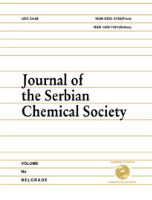
JOURNAL OF THE SERBIAN CHEMICAL SOCIETY
Exploring the Frontiers of Chemistry TogetherJOURNAL OF THE SERBIAN CHEMICAL SOCIETY, an esteemed publication in the field of chemistry, is published by the SERBIAN CHEMICAL SOCIETY and has been an essential platform for the dissemination of research since 1930. With an ISSN of 0352-5139, this Open Access journal is dedicated to fostering communication and collaboration among chemists worldwide, making its contents readily accessible to researchers, professionals, and students alike. Based in Serbia, the journal features a wide range of topics within the domain of general chemistry, as reflected in its Scopus rankings, which place it in the 34th percentile among its peers. The journal's engagement with the global scholarly community is further underscored by its consistent publication history since 1985, with coverage extending through to 2024. As the journal continues to evolve, it remains committed to promoting high-quality research and advancing the field of chemistry.

EGYPTIAN JOURNAL OF CHEMISTRY
Transforming Ideas into Solutions in the World of ChemistryThe Egyptian Journal of Chemistry, published by the National Information & Documentation Centre (NIDOC), serves as a vital platform for disseminating novel research and advancements in the field of chemistry and its interdisciplinary applications. Established in 2004 and continuing its publication through 2024, this journal encapsulates a diverse range of topics including Biochemistry, Chemical Engineering, and Materials Science, reflected in its respectable Scopus rankings. With an array of Quartile rankings indicating its varying impact across different categories, scholars can benefit from its insights into innovative solutions and methodologies that address pressing scientific challenges. Although it currently does not operate under an open access model, researchers and students are encouraged to leverage its findings as it plays a pivotal role in the academic landscape of Egypt and beyond. For those engaged in chemical research, the Egyptian Journal of Chemistry stands as an essential resource, contributing significantly to the global body of scientific knowledge.

Journal of Chemistry and Technologies
Unlocking Potential in Chemistry and Chemical Engineering.The Journal of Chemistry and Technologies, published by OLES HONCHAR DNIPROPETROVSK NATIONAL UNIVERSITY, is an open access journal dedicated to advancing knowledge in the broad fields of chemistry and chemical engineering since its inception in 2013. With ISSN 2663-2934 and E-ISSN 2663-2942, this journal provides a vital platform for researchers and professionals, particularly in Ukraine and beyond, to share innovative research findings and contemporary technological advancements. Currently ranked in the Q4 quartile in both Chemical Engineering and General Chemistry for 2023, it serves as an enriching resource for those interested in emerging trends and interdisciplinary studies within these domains. The journal adheres to high academic standards while fostering collaboration in the scientific community by offering open access articles that ensure visibility and accessibility to a global audience. As an important part of the academic landscape, the Journal of Chemistry and Technologies aims to inspire future research and development, paving the way for new discoveries and applications in chemistry-related fields.
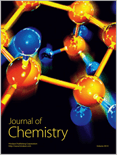
Journal of Chemistry
Exploring Diverse Sub-disciplines of ChemistryJournal of Chemistry, published by Hindawi Ltd, serves as a critical platform for advancing knowledge in the field of chemistry, particularly in its miscellaneous sub-disciplines. With an impressive 2023 Scopus Rank of #123 out of 408 and positioned in the Q2 quartile, this journal exemplifies a robust academic rigor that appeals to researchers, professionals, and students alike. It features articles related to innovative chemical research and developments, catering to a diverse audience eager to contribute to the growing body of literature in the chemical sciences. The journal has been operational from 2013 to 2024, and its Open Access model ensures that findings are easily accessible to a global audience, fostering collaboration and knowledge sharing. With a commitment to quality and relevance, the Journal of Chemistry continues to play a significant role in shaping contemporary chemical research and education.
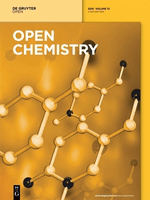
Open Chemistry
Exploring New Horizons in Chemical ResearchOpen Chemistry, published by DE GRUYTER POLAND SP Z O O, is a distinguished peer-reviewed journal that has been serving the global chemistry community since its inception. With an ISSN of 2391-5420 and an E-ISSN also of 2391-5420, this open-access journal has been accessible to researchers and practitioners alike since 2015, ensuring a wide dissemination of high-quality research findings. Located in Germany, specifically at BOGUMILA ZUGA 32A STR, 01-811 WARSAW, MAZOVIA, POLAND, Open Chemistry aims to publish innovative research across various chemical disciplines, with special attention to miscellaneous chemistry and materials chemistry. It is currently ranked in the Q3 category for both fields as of 2023, reflecting its solid standing within the academic community, with specific ranks of 187/408 in General Chemistry and 153/317 in Materials Chemistry, corresponding to respective percentiles of 54 and 51. Open Chemistry not only enhances the accessibility of cutting-edge research but also serves as a vital resource for students, professionals, and scholars seeking to advance their knowledge in the rapidly evolving landscape of chemical sciences.
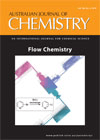
AUSTRALIAN JOURNAL OF CHEMISTRY
Fostering global collaboration in chemical sciences.The Australian Journal of Chemistry, with an ISSN of 0004-9425 and an E-ISSN of 1445-0038, is a distinguished publication from CSIRO PUBLISHING, dedicated to advancing the field of chemistry since its inception in 1948. Based in Australia, this journal serves as a platform for original research articles, reviews, and innovative studies that encompass a wide spectrum of chemical disciplines, aiming to foster communication and collaboration among researchers globally. Despite its Q3 ranking in the Chemistry (Miscellaneous) category and standing at rank #236 in Scopus’ general chemistry classification, it remains an essential resource for professionals and students seeking to stay informed about emerging trends and discoveries in chemistry. The journal does not offer open access, emphasizing the premium quality of peer-reviewed content that adheres to rigorous academic standards. By bridging theory and practice, the Australian Journal of Chemistry continues to play a crucial role in shaping the future of chemical sciences.
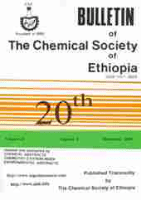
BULLETIN OF THE CHEMICAL SOCIETY OF ETHIOPIA
Fostering Collaborative Chemistry for a Sustainable FutureBULLETIN OF THE CHEMICAL SOCIETY OF ETHIOPIA (ISSN: 1011-3924; E-ISSN: 1726-801X), published by the Chemical Society of Ethiopia, serves as a pivotal platform for the dissemination of innovative research and developments within the field of chemistry. Since its inception in 1996 and now an open access journal since 2012, it has provided researchers, academics, and students with unrestricted access to critical studies and findings, thus fostering collaboration and the advancement of knowledge in the discipline. The journal's current standing in the Q3 quartile in the 2023 Chemistry category underlines its commitment to maintaining high academic standards, while its Scopus ranking, positioned at #250 out of 408 in general chemistry, showcases its growing influence and contribution to the scientific community. Hailing from Ethiopia and targeted toward a global readership, the journal aims to highlight local and international research, engaging scholars and practitioners alike in discussions that propel the science of chemistry forward.

Bulletin of the University of Karaganda-Chemistry
Elevating Academic Discourse in the World of ChemistryBulletin of the University of Karaganda-Chemistry is an esteemed academic journal published by KARAGANDA STATE UNIVERSITY, focusing on the field of chemistry and related disciplines. With an ISSN of 2518-718X and an E-ISSN of 2663-4872, this journal aims to disseminate high-quality research articles, reviews, and scholarly discussions that contribute to the advancement of knowledge in chemistry. Although it has experienced a transition in its coverage from 2021 to 2022, the journal remains a significant platform for researchers and students alike, promoting open access to its valuable content. Despite its current Scopus rank of #379/407 in the general chemistry category, the Bulletin of the University of Karaganda-Chemistry serves as a vital resource for the academic community in Kazakhstan and beyond, fostering collaboration and innovation in various chemical research domains. Researchers, professionals, and students are encouraged to engage with the journal as it continues to evolve and contribute to significant scientific discussions.

CHEMICAL JOURNAL OF CHINESE UNIVERSITIES-CHINESE
Elevating Scholarly Dialogue in Chemistry.CHEMICAL JOURNAL OF CHINESE UNIVERSITIES-CHINESE, published by Higher Education Press, serves as a vital platform for advancing research in the field of chemistry. With a history dating back to 1996, this journal has evolved to encompass a wide range of topics fundamental to the chemistry community, catering to both applied and theoretical perspectives. Although classified in Quartile 4 within the broader chemistry category, it remains a significant contributor to the knowledge base, ranking 281st out of 408 journals in the general chemistry category according to Scopus. Positioned in Beijing, China, the journal aims to foster collaboration among researchers and professionals while disseminating innovative research and developments. By promoting open exchange of ideas in chemistry, it strives to elevate the scholarly dialogue and contribute to ongoing education for students and professionals alike, with its content accessible through institutional subscriptions.